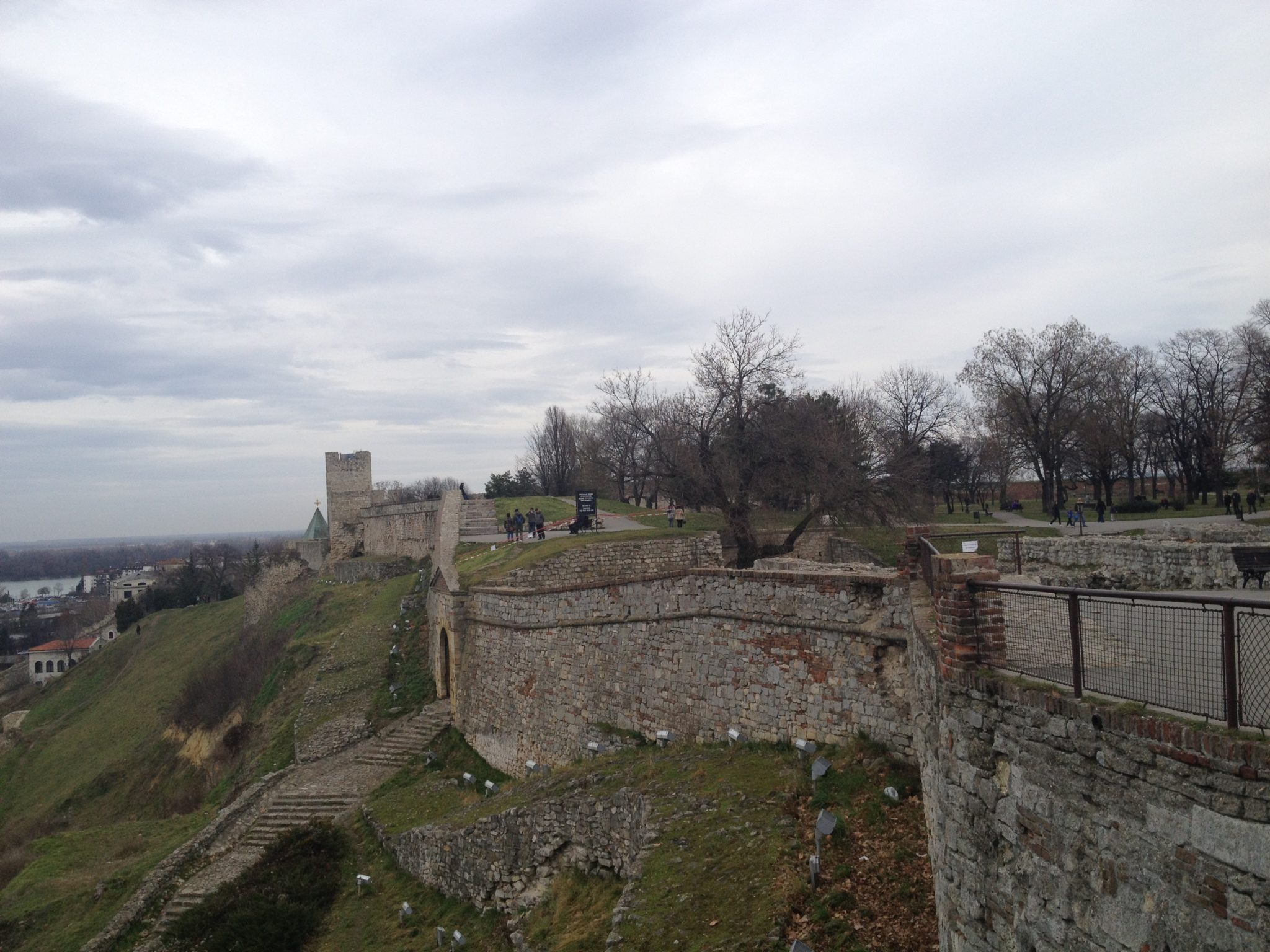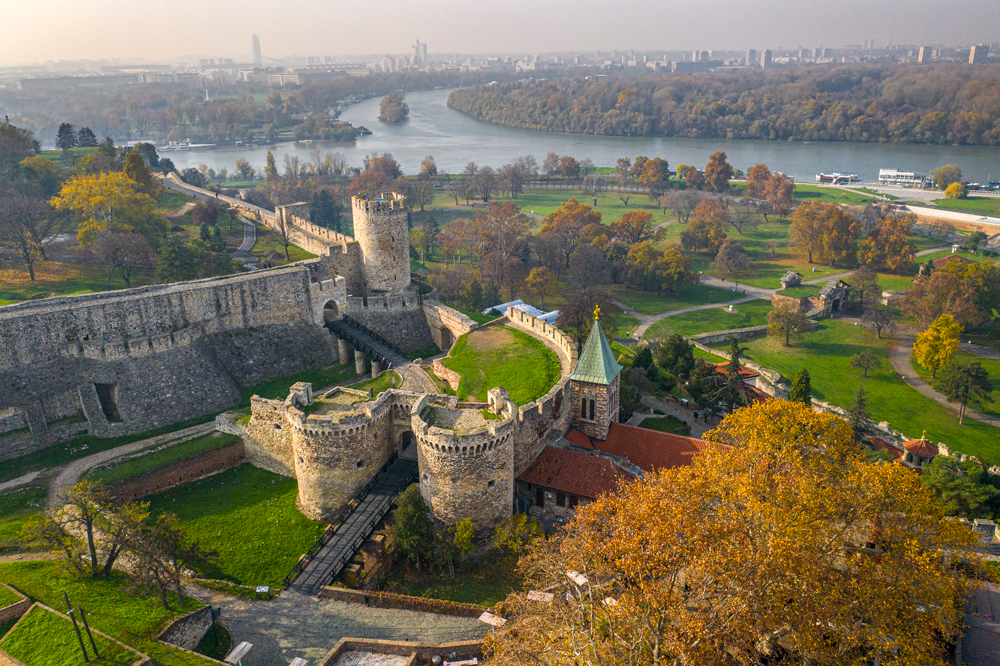
The historic capital of Belgrade is a lush green city of culture nestled between two rivers, which provide the backdrop for many of the city’s key sights, and split the city up into the more attractive Old Belgrade and New Belgrade, defined by its post-war brutalist architecture. The city, which makes its three century long Ottoman heritage felt at every step, is also one that never sleeps and the symbol of great nightlife.

1) Belgrade castle
Start your tour of the Serbian capital Belgrade, one of Europe’s oldest cities, from the castle. The castle, whose construction dates to the 1st century BC, is like an open air museum from which the city’s two millennia of history are spread before your eyes. The Military Museum also awaits visitors at the castle, which invokes memories of the Ottomans with the Damat Ali Tomb, Sokullu Fountain and Istanbul Gate.

2) Ada Ciganlija
The island of Ciganlija on the Sava river is just four kilometres from the city centre. Boasting a luxuriant green cover, this island brings a taste of the sea to Belgrade hanks to the sparking clean beaches lining its shores. With areas conducive to everything from golf and basketball to jogging and water skiing, the island also offers a wide array of cafes and restaurants.

3) Ada Bridge
One of the symbols of New Belgrade, this bridge joins the two banks of the Sava river. Opened on 1 January 2012, it is conspicuous for the towering pylon that rises at its midpoint. At 929 metres in length, the bridge has six lanes for traffic and two pedestrian lanes as well as a light rail line.

4) Old Belgrade
The historic city centre lies around Kale Megdan, a fortress at the confluence of the Danube and Sava Rivers. When you stroll as far as Republic Square along Knez Mihailova, you can explore sights such as Princess Ljubica’s Residence, the National Museum and the Monument to Branislav Nusic.
5) Skadarlija Quarter
Skadarlija with its rows of houses dating mainly from the 19th century is known as the city’s Bohemian quarters. A popular stop in the past with artists, writers and musicians including Alfred Hitchcock and Jimi Hendrix, the area is known today for its garden restaurants serving local specialties. Shows are staged in 19th century costume to the accompaniment of local orchestras at the music halls in this quarter whose atmosphere has been compared with that of Montmarte in Paris.

6) Danube Cruise
Enrich your Belgrade stay with a cruise on the Danube. Available either as day cruises or on ships offering overnight accommodation, Danube cruises take in four beautiful capitals in one go – Belgrade, Budapest, Bratislava and Vienna, on this river that starts in southern Germany and empties into the Black Sea. Discover Europe’s second longest river through the changing scenery of some of Europe’s most beautiful cities, with these four or five-star cruises.

7) Bajrakli Mosque
Built by the Ottomans in the 16th century, Bajrakli (Flag) Mosque is Belgrade’s oldest Islamic temple open to worship. Used as a church for 20 years following the Treaty of Passarowitz (1718), the mosque was reopened to worship with the Ottoman conquest of Belgrade. Repaired by Sultan Albulhamid, it is characterised by a square floor plan. As with visiting any working religious building, be sure to dress modestly.

8) Nikola Tesla Museum
How about a tour of a museum named for the world-renowned physicist Nikola Tesla, the designer of modern alternating current electricity power systems? Numerous objects and documents pertaining to Tesla, who holds more patents than anyone else with 700 inventions, are on exhibit at this museum which bears the famous inventor’s name.
9) Topcider Park
The vast Topčider (named after the Turkish word for cannons, as this is where the Turks cast their cannons for the 1521 attack on Belgrade) has been a favourite picnic area for Belgraders since the 19th century, when its gigantic sycamore tree was planted. Spread over an area of 110 square metres, this park is laid in 1831-33 as the garden of Prince Milos. Boasting a pavilion that belonged to the prince, it is also rich in trees and plant diversity.

10) From Karlovci to Novi Sad
A dove of around an hour and a half from Belgrade makes a pleasant day trip. Sremski Karlovci, where the Treaty of Karlowitz was signed in 1699 between the Ottomans and the Holy League, is a small but charming town. And Novi Sad, Serbia’s second largest city, offers many places worth paying a visit. Petrovaradin Castle, erected against the Ottomans, Voyvodino Museum and Bishops Palace are just a few of them.

Belgrade is interesting every time of year, but it is most beautiful in springtime – the temperature is around 20 degrees Celsius, everything is just flourishing and providing a perfect setting for long walks and sightseeing. If you choose to visit the city in the fall, don’t miss the traditional Belgrade book fair that takes place every year in the end of October.
Belgrade is by no means a ‘pretty’ capital, but its gritty exuberance makes it one of the most happening cities in Europe. It is just a short 2-3 hours flight within Europe and I would recommend those looking for a different and more affordable European experience to come visit Belgrade to experience what this city has got to offer.


